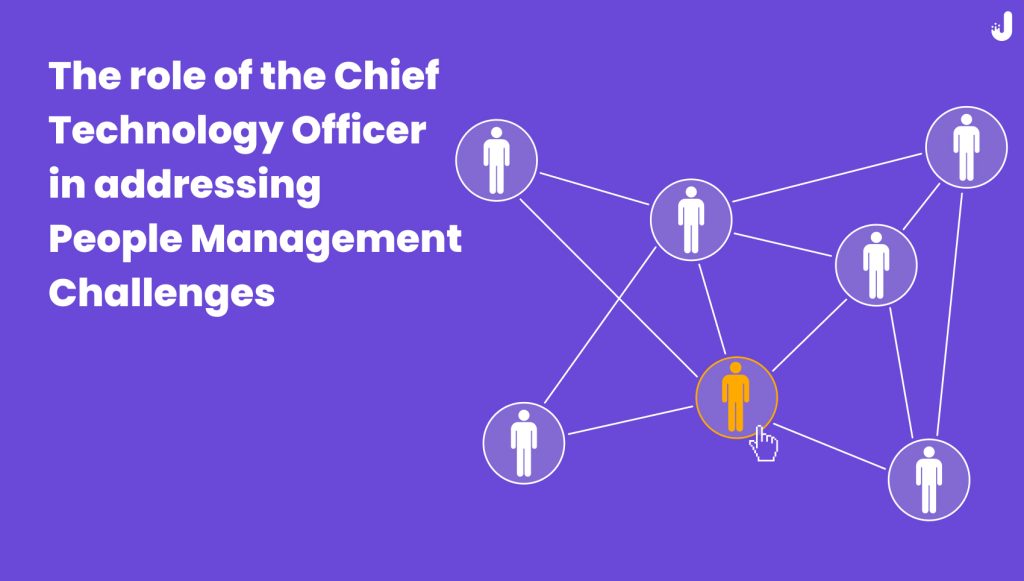Table of Contents
The IT industry is known for its competitive job market, with a high demand for skilled professionals. Well-implemented people management helps retain top talent by creating a positive work environment, and rewarding performance. This article will cover the following subjects:
- Essentials of People Management,
- Core people management challenges faced by the CTO in a growing enterprise,
The article also considers what happens if the CTO overlooks people management.
Why do IT companies need people management at all?
There is no short answer to the question posed in the title. Such management is integral to operating well-organized teams with clearly defined responsibilities. However, maintaining clear responsibilities and roles within a team is not enough. Let’s run through other factors calling people management in IT to life:
- Rapid technological change. The fast pace of technological advancement means that IT professionals continuously learn and adapt. Quality people management provides opportunities for professional development, helping engineers stay updated with the latest technologies
- Talent retention. With well-thought people management, you retain top talent by creating a positive work environment and offering career growth opportunities.
- Mitigating high-stress levels. The IT sector is under high pressure due to tight deadlines and the need for permanent availability of services. People management strategies help manage stress, promote work-life balance, and support employees.
- Change management. IT departments frequently change due to project shifts, technological upgrades, or organizational restructuring. Good people managers ensure that these changes are communicated properly, that employees are supported through transitions, and that the organization remains resilient.
- Innovation. The IT industry thrives on innovation. People management fosters an environment that encourages creativity and experimentation.
Organization of proactive people management in IT
Hiring
You start shaping people management politics with a thorough analysis of current and future requirements of projects. This analysis highlights specific skills, experience levels, and the number of engineers needed to make your ideas come to life.
Typically, hiring is a multi-step process: defining the role, sourcing candidates, screening, technical interviews, and finally, making an offer. Technical interviews play a determining role here. At this step, you assess candidates’ problem-solving abilities, coding skills, and whether they understand software engineering principles. Hands-on coding tests or take-home assignments provide insights into candidates’ coding proficiency and approach to real-world problems.
Following this, you should present a competitive offer that includes salary, benefits, and growth opportunities. Tailor your offer to address the candidate’s career aspirations. Be prepared for negotiations. Understand the market rates and be clear about your limits. Consider non-monetary benefits as negotiation points.
Remember, the goal is not just to fill a position but to onboard an individual who will contribute to your team’s and company’s success. However, hiring is just an early link in the long chain of people management processes:
Individual work with engineers
On an individual level, face-to-face (“one-on-ones”) meetings with technical managers and HR cannot be overestimated. These interactions provide personalized feedback and facilitate career discussions. With the help of feedback loops and eNPS (Employee Net Promoter Score), you’ll get insights into understanding individual needs and workplace satisfaction. Regular performance reviews are a must. But it’s not a tick-box exercise. Use these as opportunities to provide honest, constructive feedback.
Psychological contracts
A psychological contract is an unwritten set of expectations between employer and employee. We know that misalignment in these expectations leads to dissatisfaction. Therefore, they need to have clear, open conversations about role expectations and career trajectories. That’s how you avoid misunderstandings leading to disappointments or conflicts.
Assessments for engineers
These are technical evaluations, project reviews, and competency assessments. You should conduct those evaluations to gauge skill levels, identify areas for improvement, and align individual capabilities with team goals.
Individual development and growth opportunities
It’s important to outline potential career paths within the organization so that a developer will see growth opportunities. In our experience, a helpful approach is building individual roadmaps highlighting skill development, certifications, and potential leadership opportunities.
Growth into executive management within the company is a clear pathway for career advancement. This usually involves leadership training, senior management mentorship programs, and strategic project involvement. Developers should understand the competencies and experiences required for such roles and be provided with opportunities to develop these competencies.
Exposing developers to real-life challenges
Hands-on experience is the best teacher. Get your developers involved in those big-picture projects. It’s like jumping into the deep end – they’ll learn to swim in strategic decision-making and cross-functional collaboration. Start from little projects and expand to bigger ones.
Transparency is the key
You want the information to be properly understood by your team. It is often done by repeating important information in different forms. Transparency and empathy are key. It’s usually better to part ways amicably when the employee’s aspirations no longer align with the company’s direction.
Let’s say you built a developers’ team but encountered roadblocks. Let’s explore why they occur and what helps overcome them.
The role of the CTO in addressing HR challenges of a growing IT department
Growing IT teams face a multitude of people management challenges that arise on the way to a successful product release. The Chief Technology Officer (CTO) plays a pivotal role in navigating these challenges, ensuring the team remains productive and aligned with the company’s strategic goals. What are the specific HR-related difficulties faced by the team and how does the CTO overcome them?
- To begin with, the lack of effective people management in an organization is a negative factor, which also implies a leadership gap. It means that teams lack direction and motivation, as well as cultural misalignments affecting productivity, and retention issues with higher turnover rates due to dissatisfaction from poor management. These issues spotlight the dire need for strong leadership and people management practices to ensure organizational success and stability. The CTO solves the above-mentioned challenges by building leadership capabilities within teams, fostering a culture of openness, innovation, and collaboration, and implementing retention strategies focused on career development, recognition, and work-life balance. These efforts inspire and motivate teams, aligning them with organizational goals, and helping to retain top talent.
- The scarcity of skilled mid-level developers is nearly as significant an issue. It leads to a massive skill gap, characterized by an insufficient number of mid-level professionals capable of assuming leadership roles in technical projects. This challenge is compounded by a mentorship void, where there is a noticeable gap in guidance for less experienced team members. Without mentorship guidance, it’s hard to develop into mid-level or senior positions. The CTO should anticipate this challenge by creating opportunities for professional development, which includes organizing training programs, facilitating certifications, and encouraging attendance at relevant conferences.
What happens if you overlook people management?
Imagine we overthought the role of people management in the IT company and let the company slide with what HR resources it has in place. We already invested in hiring, so why wouldn’t things just work on their own? In this case, it won’t be a big surprise if the following things start happening:
- Low employee engagement: in the absence of effective people management, employees feel undervalued and unsupported, leading to disengagement. This diminishes their motivation and weakens their commitment to the company’s objectives, undermining overall productivity.
- High turnover rates: poor management drives increased employee turnover. In the competitive IT job market, skilled professionals are less likely to endure a suboptimal work environment. Frequent turnover incurs significant costs related to recruitment and training, disrupts ongoing projects, and destabilizes team dynamics.
- Poor team collaboration: it implies unresolved conflicts, frequent miscommunications, and poorly coordinated efforts, all of which can delay projects and compromise the quality of outputs.
- Innovation stagnation: IT companies rely heavily on continuous innovation. Without supportive management that encourages creative thinking and problem-solving, employees hesitate to explore innovative ideas or engage in initiatives beyond their defined roles.
- Damaged reputation: a company known for poor management practices can suffer a damaged reputation, which not only makes it challenging to attract top talent but can also affect relationships with clients, investors, and other stakeholders.
Final thoughts
Proactive people management is indispensable in an IT company, and the CTO’s role in its organization is central. This approach not only enriches the skill set of the team but also ensures a culture of continuous learning and adaptability. Furthermore, by fostering people management practices in IT departments, the CTO nurtures talent within the organization. It’s up to the CTO to implement strategic initiatives focused on process optimization, talent development, automation, and cultivating a healthy work culture. These efforts help not only in overcoming immediate challenges but also in setting a foundation for sustainable growth and innovation.





